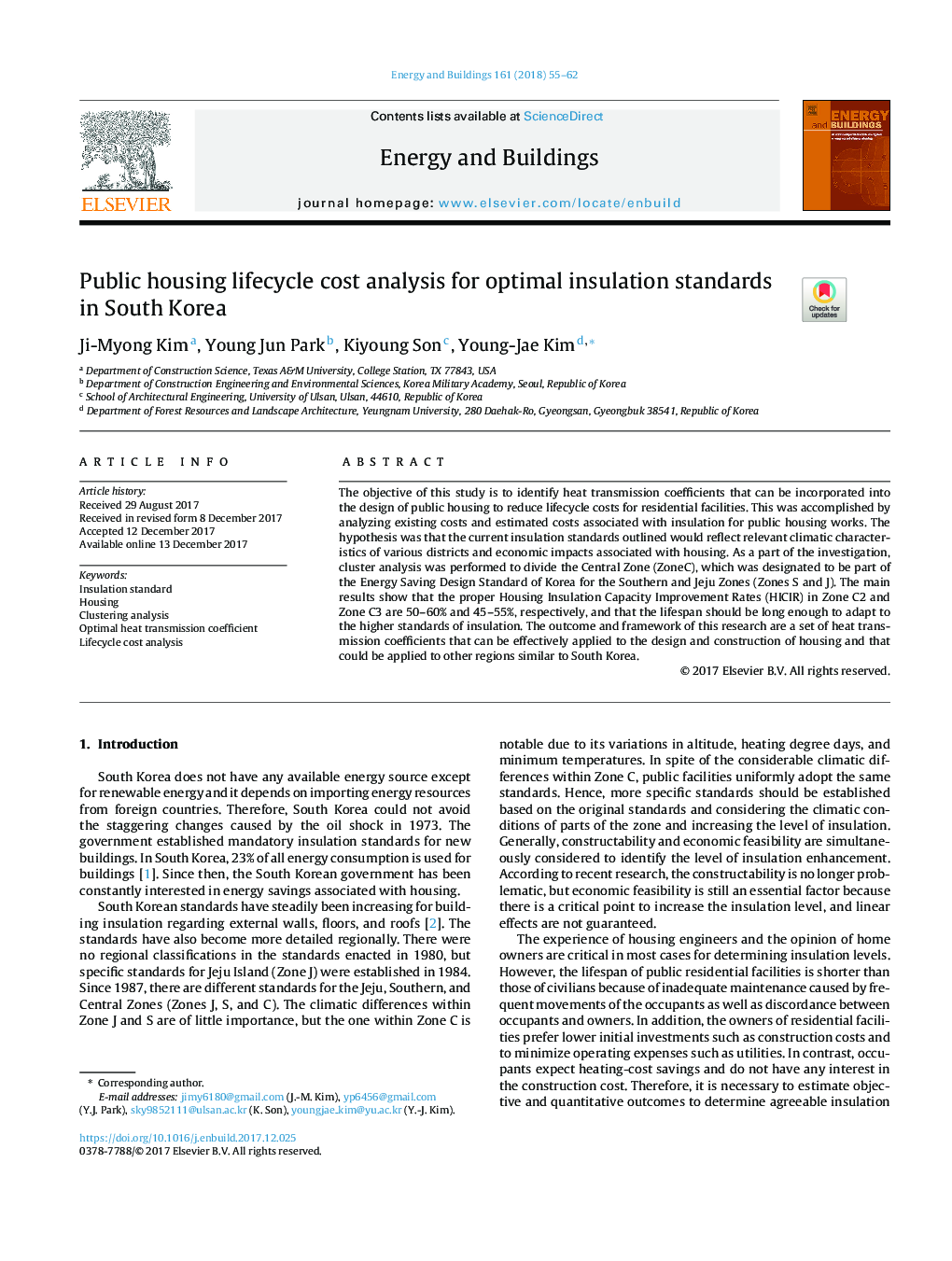| Article ID | Journal | Published Year | Pages | File Type |
|---|---|---|---|---|
| 6728995 | Energy and Buildings | 2018 | 8 Pages |
Abstract
The objective of this study is to identify heat transmission coefficients that can be incorporated into the design of public housing to reduce lifecycle costs for residential facilities. This was accomplished by analyzing existing costs and estimated costs associated with insulation for public housing works. The hypothesis was that the current insulation standards outlined would reflect relevant climatic characteristics of various districts and economic impacts associated with housing. As a part of the investigation, cluster analysis was performed to divide the Central Zone (ZoneC), which was designated to be part of the Energy Saving Design Standard of Korea for the Southern and Jeju Zones (Zones S and J). The main results show that the proper Housing Insulation Capacity Improvement Rates (HICIR) in Zone C2 and Zone C3 are 50-60% and 45-55%, respectively, and that the lifespan should be long enough to adapt to the higher standards of insulation. The outcome and framework of this research are a set of heat transmission coefficients that can be effectively applied to the design and construction of housing and that could be applied to other regions similar to South Korea.
Related Topics
Physical Sciences and Engineering
Energy
Renewable Energy, Sustainability and the Environment
Authors
Ji-Myong Kim, Young Jun Park, Kiyoung Son, Young-Jae Kim,
